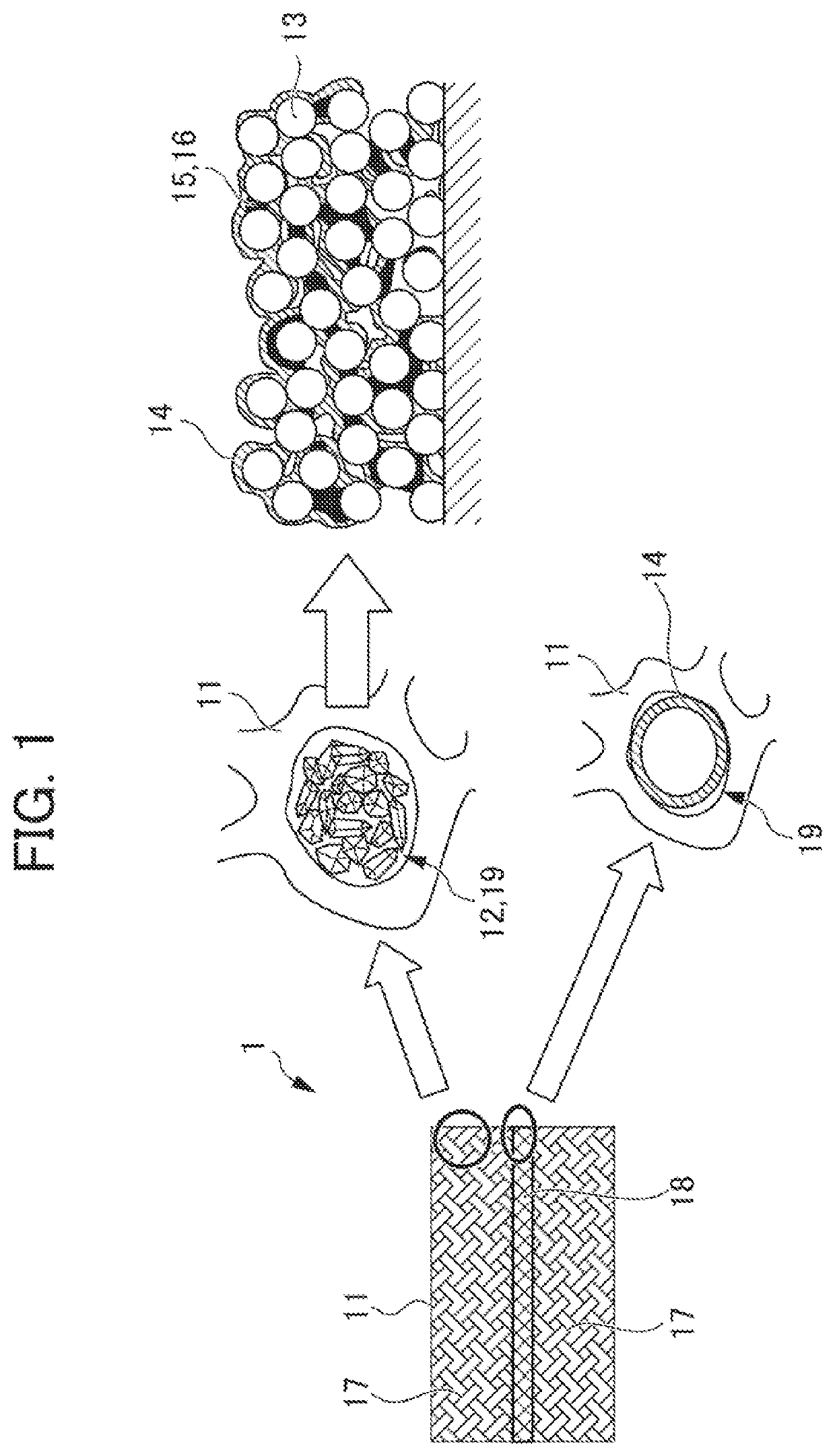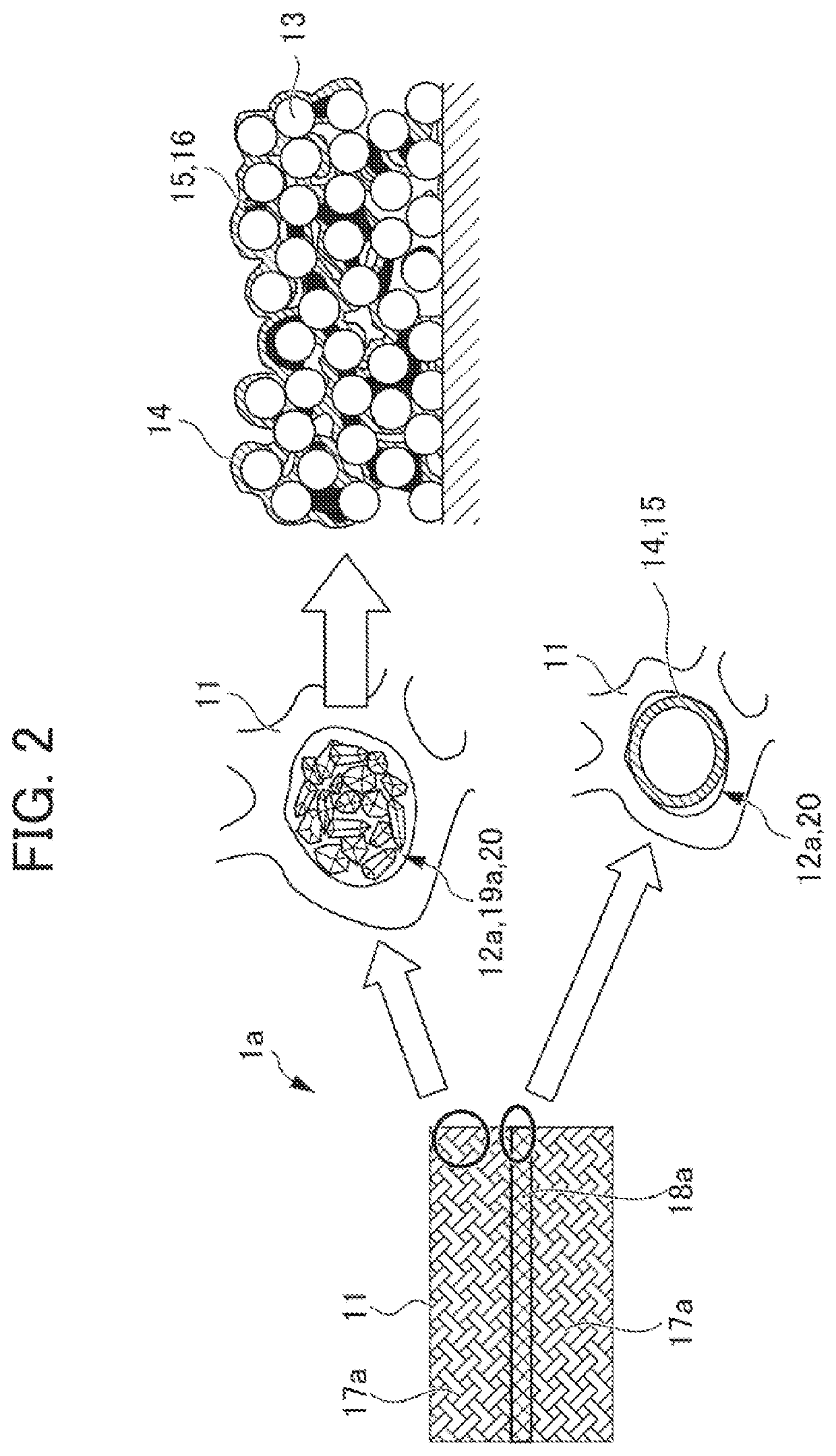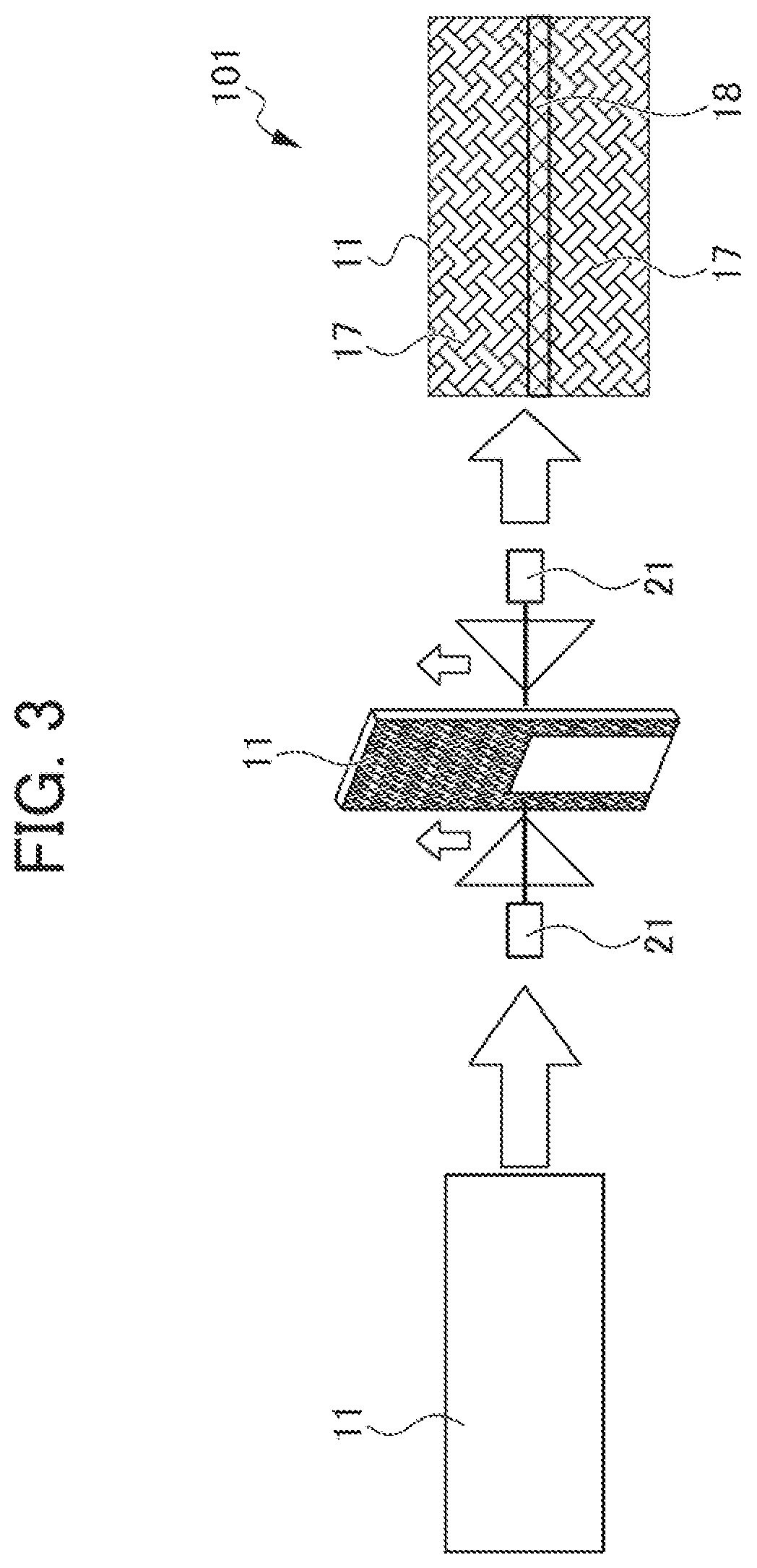Negative electrode for use in non-aqueous electrolyte secondary battery and non-aqueous electrolyte secondary battery including same
- Summary
- Abstract
- Description
- Claims
- Application Information
AI Technical Summary
Benefits of technology
Problems solved by technology
Method used
Image
Examples
first embodiment
[0026]Hereinafter, a first embodiment of the present invention will be described in detail with reference to the drawings.
Negative Electrode
[0027]FIG. 1 is a view schematically showing the inner structure of a negative electrode according to an embodiment of the present invention for use in a non-aqueous electrolyte secondary battery. The negative electrode 1 according to this embodiment for use in a non-aqueous electrolyte secondary battery includes a current collector 11, a first negative electrode material 12, and a second negative electrode material 19. The current collector 11 includes a porous metal body. The first negative electrode material 12 is disposed in pores of the porous metal body and includes a negative electrode active material 13 including a silicon-based material; a conductive aid 15; and a binder 16. The second electrode material 19 is disposed in pores of the porous metal body and includes a skeleton-forming agent 14 including a silicate having a siloxane bond....
second embodiment
[0086]A negative electrode according to another embodiment (hereinafter also referred to as a second embodiment) of the present invention for use in a non-aqueous electrolyte secondary battery includes a current collector including a porous metal body; a first negative electrode material disposed in pores of the porous metal body and including a conductive aid; a second negative electrode material disposed in pores of the porous metal body and including a binder, a conductive aid, and a negative electrode active material including a silicon-based material; and a third negative electrode material disposed in pores of the porous metal body and including a skeleton-forming agent including a silicate having a siloxane bond. The negative electrode has a pair of first regions and a second region, in which the pair of first regions are each located in each outer portion of the current collector in the thickness direction of the current collector and each contain the first negative electrod...
example 1 preparation
of Negative Electrode
[0103]A negative electrode material slurry was prepared including a first negative electrode material including silicon (in the form of particles with diameters of 1 to 3 μm) as a negative electrode active material, the conductive aid shown in Table 1, and polyvinylidene fluoride (PVdF) as a binder. Subsequently, the prepared slurry was charged into a pair of first regions of a current collector Nickel Celmet® manufactured by Sumitomo Electric Industries, Ltd., which were located in the two outer portions in the thickness direction of the current collector. In this case, the current collector had a 50 μm-wide second region at its center. Subsequently, the current collector filled with the slurry was subjected to drying and pressure adjustment, so that a negative electrode layer precursor was obtained having a pair of first regions and a second region in the current collector, in which the pair of first regions were located in the two outer portions in the thickn...
PUM
 Login to View More
Login to View More Abstract
Description
Claims
Application Information
 Login to View More
Login to View More - R&D
- Intellectual Property
- Life Sciences
- Materials
- Tech Scout
- Unparalleled Data Quality
- Higher Quality Content
- 60% Fewer Hallucinations
Browse by: Latest US Patents, China's latest patents, Technical Efficacy Thesaurus, Application Domain, Technology Topic, Popular Technical Reports.
© 2025 PatSnap. All rights reserved.Legal|Privacy policy|Modern Slavery Act Transparency Statement|Sitemap|About US| Contact US: help@patsnap.com



